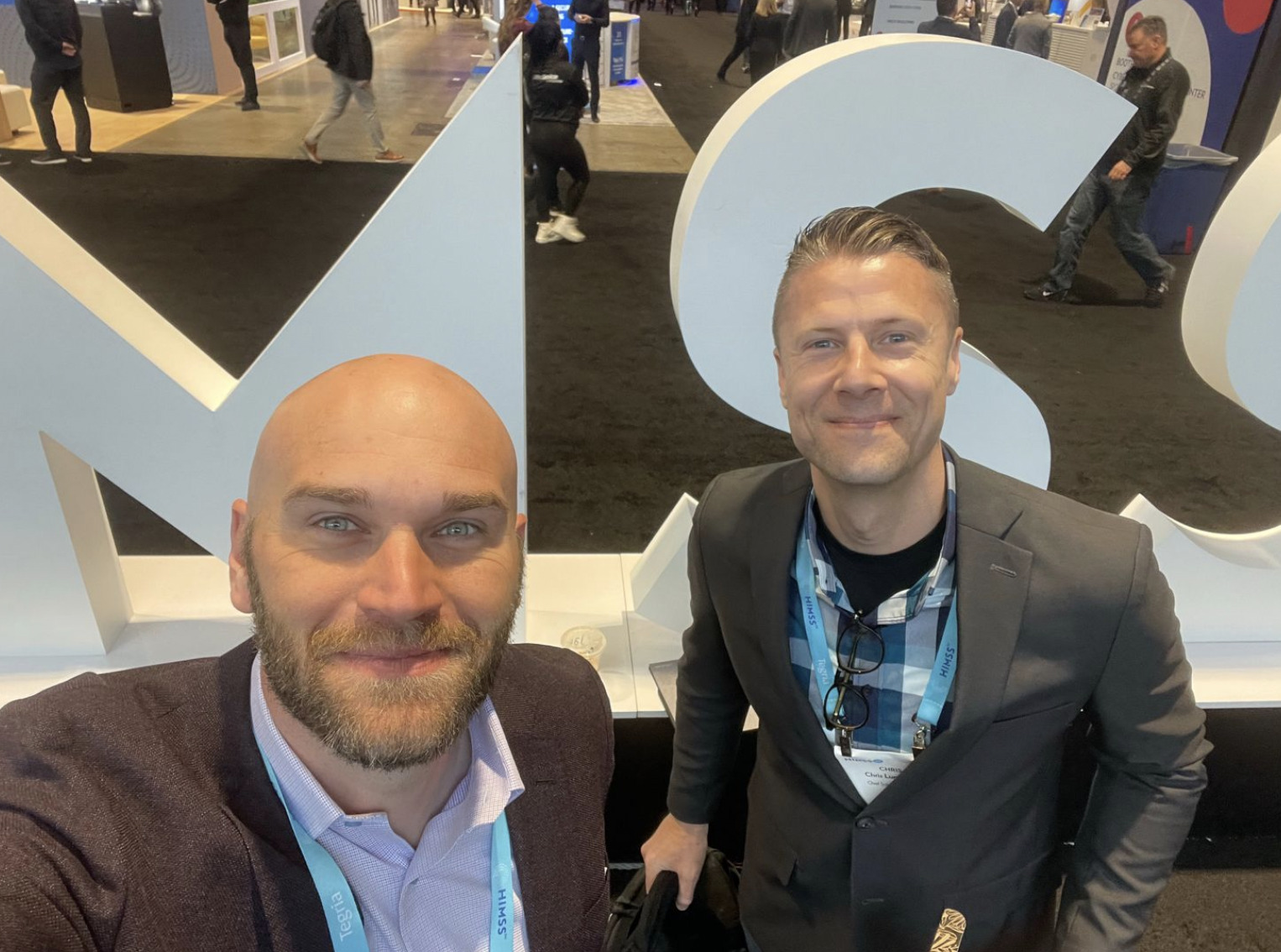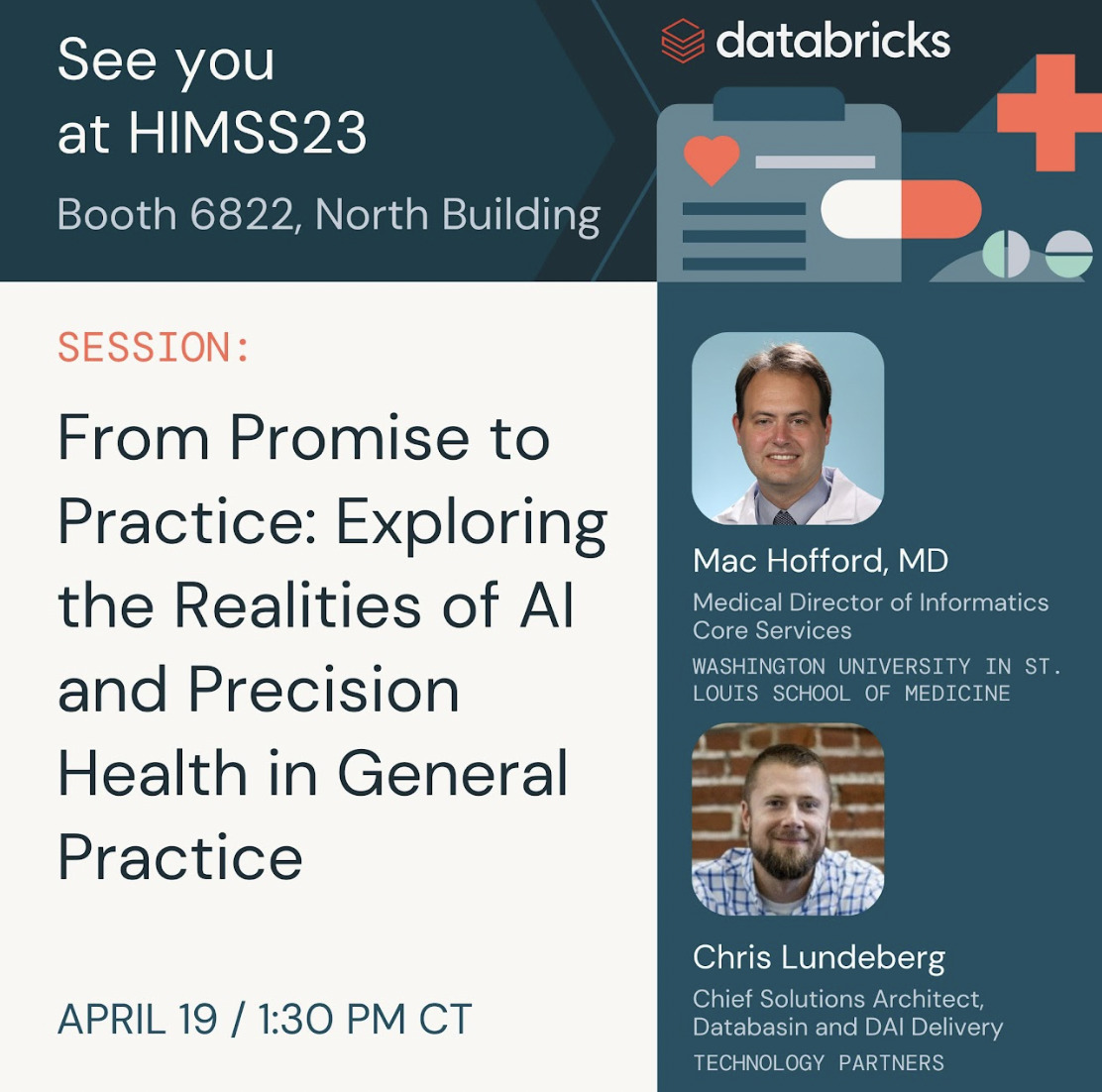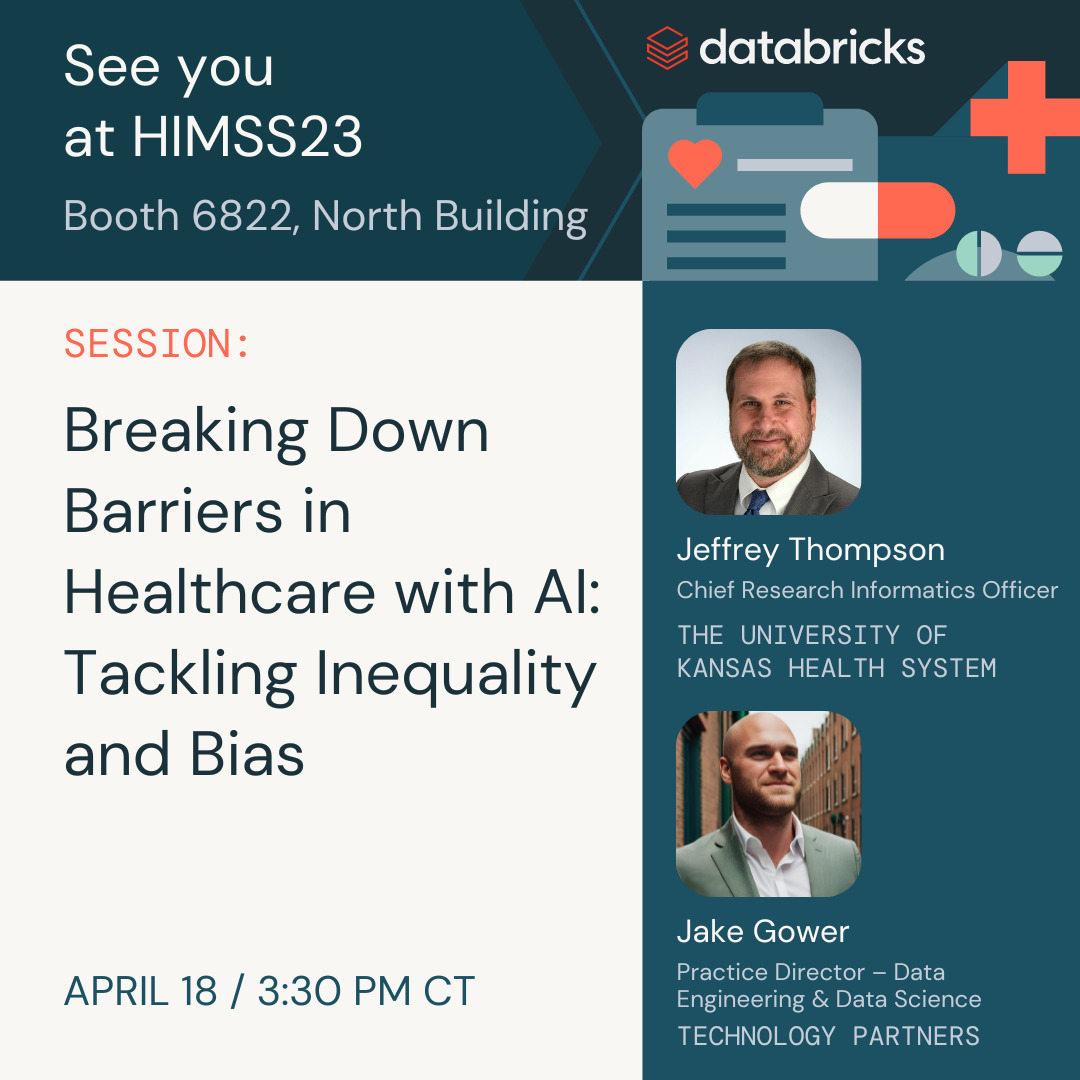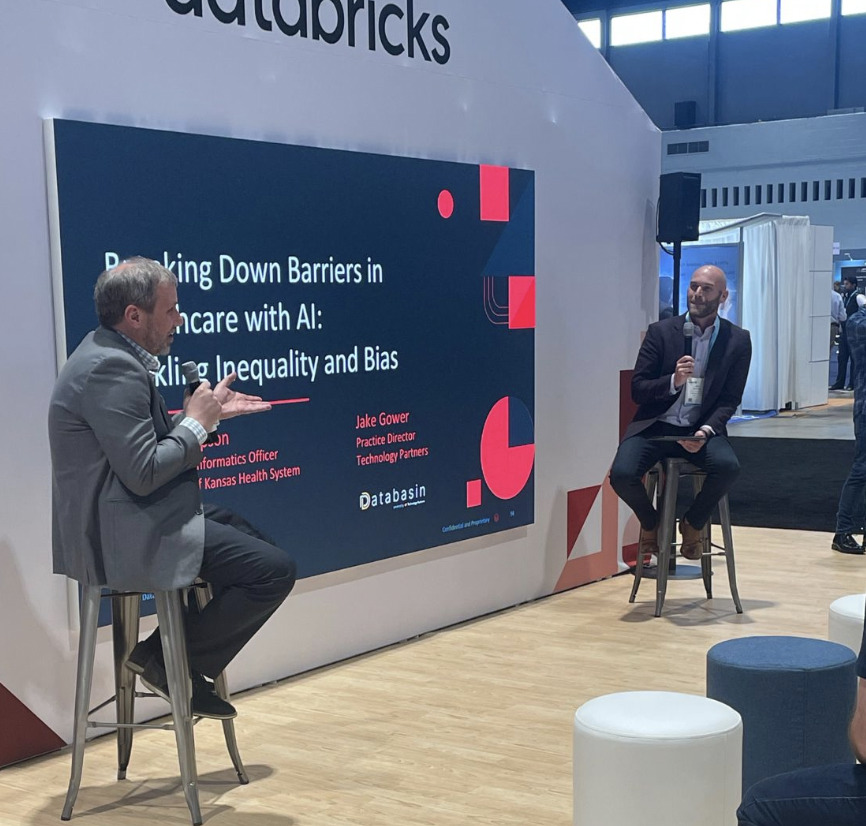Technology Partners was honored to be alongside Databricks at last week’s HIMSS Global Health Conference & Exhibition – the most influential health information technology event of the year. More than 40,000 professionals throughout the global health ecosystem met to build relationships during lively networking events and learn from experts in hot topic education sessions.
We were fortunate enough to host two of those education sessions and have recapped them below from the perspective of our Data and Artificial Intelligence practice leaders.

Our data product, Databasin – powered by Technology Partners – is quickly becoming a preferred automated research and clinical data lakehouse platform.
“Working with Databricks and the Databasin team has made our work more possible than ever before,” said Dr. Jeffrey Thompson, Chief Research Informatics Officer, The University of Kansas Health Systems.
Our team recaps the Technology Partners sessions below:
SESSION TITLE: FROM PROMISE TO PRACTICE: EXPLORING THE REALITIES OF AI AND PRECISION HEALTH IN GENERAL PRACTICE
Participants:
Chris Lundeberg, Chief Solutions Architect, Databasin and DAI Delivery, Technology Partners
Dr. Mackenzie Hofford, Medical Director of Informatics Core Services at Washington University in St. Louis
Chris and Dr. Hofford had a great discussion around emerging AI products, and their practical application within Dr. Hofford’s day-to-day activities as both a practicing physician and a data scientist.

Chris’ Key Takeaways:
Dr. Hofford’s stance is that he is a physician-first, and focuses on ensuring his patients’ health. He explained that while we are inching closer to advancements in using AI-based tools in practice, the medical industry as a whole is behind other sectors in our economy.
We discussed the flood of large language models into our technical landscape and what that might mean for the medical industry. Dr. Hofford believes that generalized language models might be powerful enough to start relieving our need for much more specialized models, but using them for things like ‘natural language processing’ can still be a challenge given the way doctors annotate their patient encounters.
We also explored how difficult it still is to share data with other institutions, and acquire new data sources to augment EHR data, which is readily available. It’s still very true that having a consolidated data lakehouse solution, as Washington University does, provides an enormous amount of value and a great jumping off point for performing experiments.
Dr. Hofford believes that with more computer interaction helping physicians during visits, we might even be able to change some antiqued practices in place, such as using whole numbers, instead of decimals to represent certain medical conditions. He is hopeful that computational models can help us revisit overly simple care measurements that are still rooted in human processing.
SESSION TITLE: BREAKING DOWN BARRIERS IN HEALTHCARE WITH AI: TACKLING INEQUITY AND BIAS
Participants:
Jake Gower, Practice Director, Technology Partners
Dr. Jeffrey Thompson, Chief Research Informatics Officer, The University of Kansas Health Systems
Dr. Thompson is well known for his healthcare research leadership and contributions as the CRIO at KUMC. This session received positive feedback for its focus on tackling inequity.

Jake’s Key Takeaways
Like most research leaders, Dr. Thompson sees the promise of continued adoption of cognitive compute services to drive precision and population healthcare efforts forward.
His unique focus on equitable and just care across underserved populations also leave him wary of both existing and unrecognized biases in both AI and healthcare.
Dr. Thompson addressed several prescient topics on leveraging cognitive compute services to tackle inequities and biases in healthcare; and it’s an opportunity he doesn’t want us to miss – not only at KU and UKHS but at the systems level across the country.
One: Biases within EMR, the most relied upon research data sources, often reflect prior clinical care and treatment biases in labels. Social determinants of health require not just care data but a significant amount of social and community data – getting that data requires partnerships that reflect commitments to community driven research practices.
You can’t logically judge the financial stability and possible credit card utilization rates of individuals based on their race – race is not a directly contributing feature. However, it may appear to be based on systemic level challenges. An untrained data researcher, scientist, or user could make presumptions that only forward and deepen existing biases.
As a side note, ingesting, landing, and modeling data that is readily available to deliver insights as a service across a medallion layer can be challenging. “Working with Databricks and the Databasin team has made our work more possible than ever before,” he said.
Two: Models trained on population-level data can quickly fall apart, BUT that doesn’t mean they don’t provide value.
One recent example includes national data reflecting a trend that rural residents consume more levels of alcohol. While that may be accurate nationally, in his local Kansas City metro, that actually isn’t true. Urban residents in fact consume more alcohol than rural individuals.
While that model could lead to incorrect assumptions and unintended workflow and patient care consequences, it’s not entirely without value. Specifically, are there identified determinants of that urban consumption? If so, could those be utilized in a research and care environment to assist healthcare professionals and patients? The answer is likely yes.
Our session also highlighted the need for data scientists and technical leaders across industries to understand a few responsibilities that will rapidly determine successful outcomes in the new promises of communicative, generative, and assisted AI technologies.

First comes the realization that equitable and just research design is an organizational and individual imperative. As technology makes operational data science efforts easier, that does not create a license for reckless abandon in model deployment. Thoughtfully evaluating potential and real equity and equality implications along with determinants is where those prior manual efforts should shift and shift rapidly.
Second, is that all things innovative and disruptive challenge our norms in varying ways, especially in established verticals, industries, and workflows. Once that is understood, it becomes readily apparent that recent and future AI innovations can’t deliver the promised impacts within your own four walls.
Within healthcare the existing system level challenges of insurance, payor relationships currently built on fee for service along stand imminently in the way of precision medicine creating better outcomes in preventable treatment and care planning.
Researches can’t lead that charge alone, but who will? How does society want to the future of medicine to feel? How will care systems be rewarded financially for preventing that next ER visit or re-admittance across the care continuum?
Those questions require many stakeholders, many of which aren’t presently engaged in leading the direction of heath are in a just and fair way across this country.




